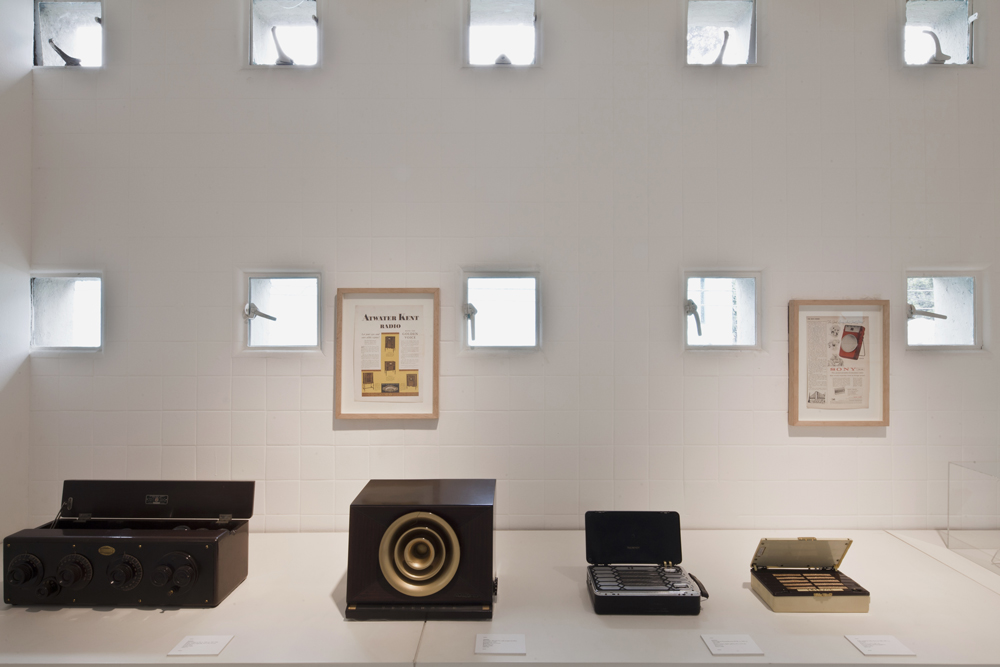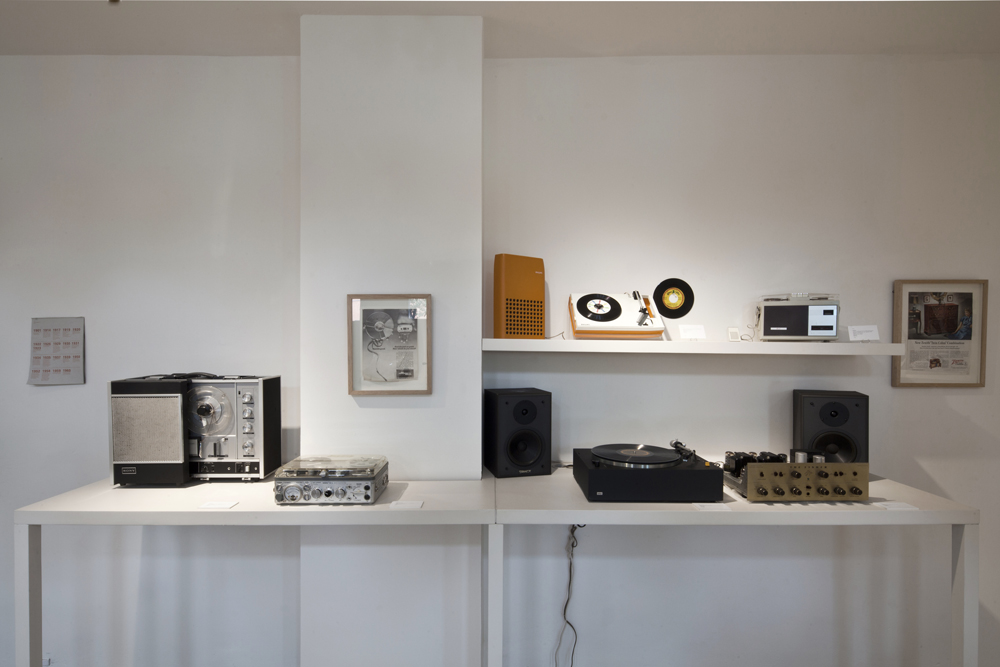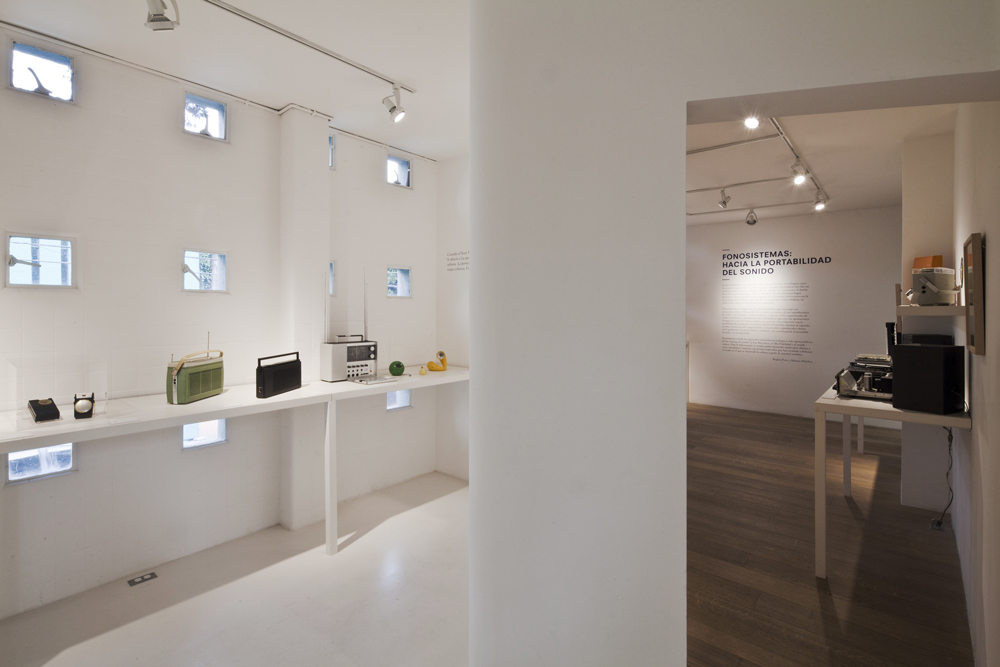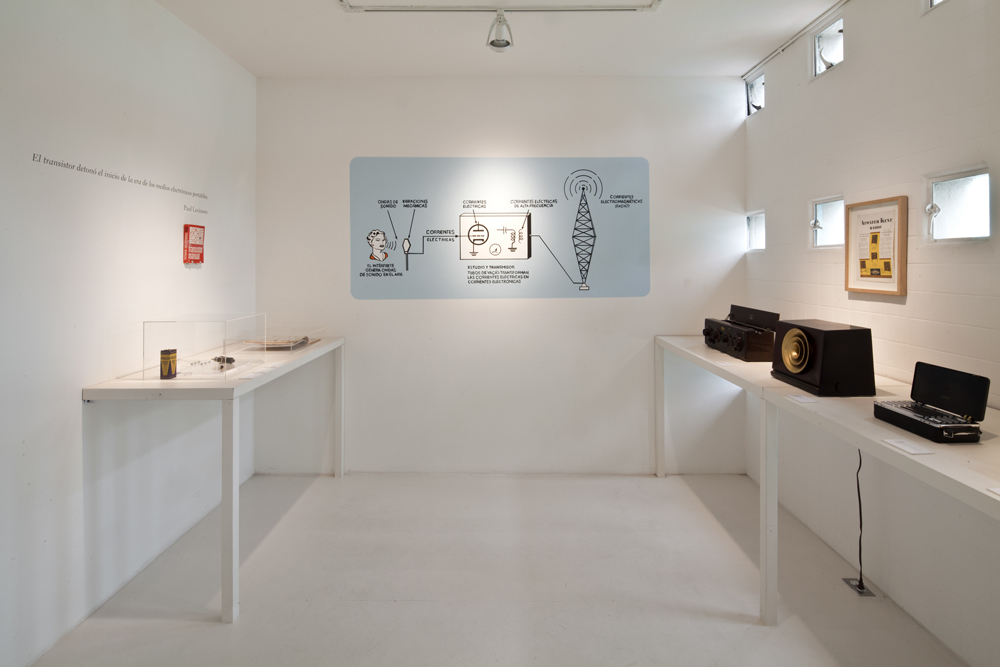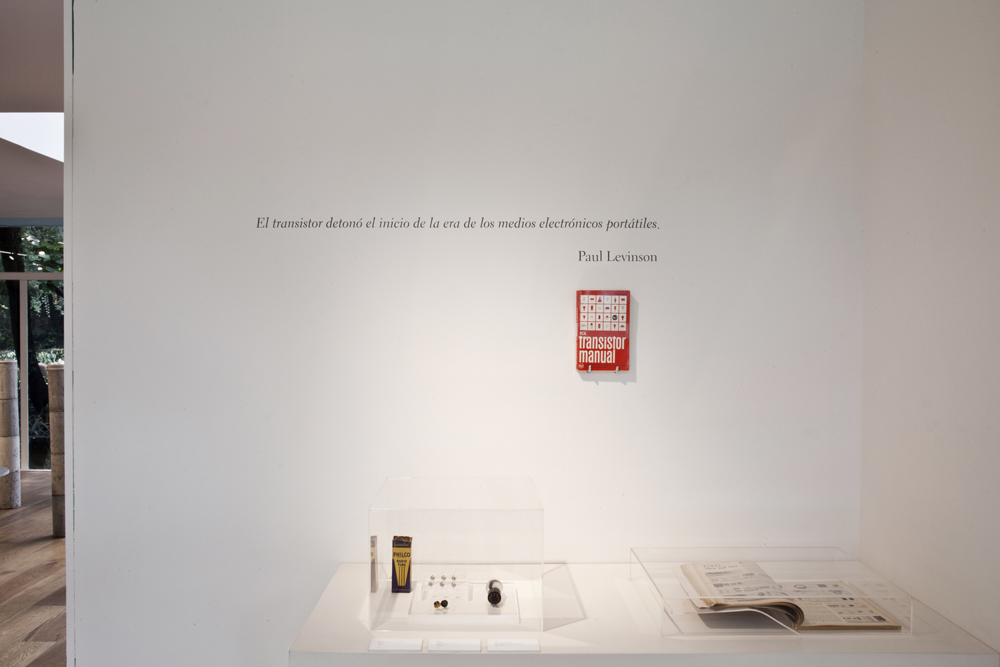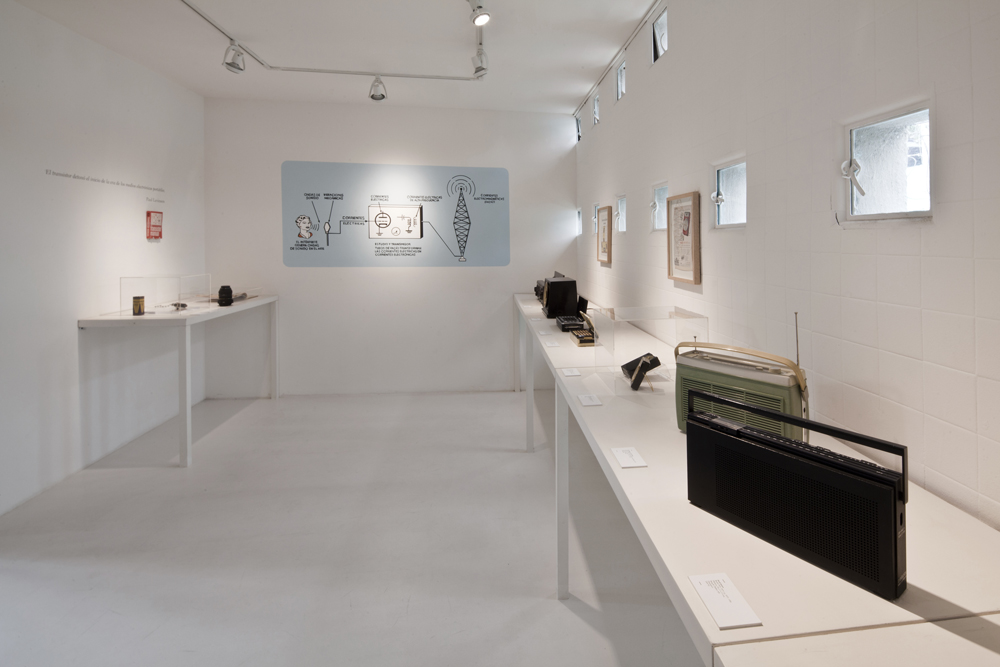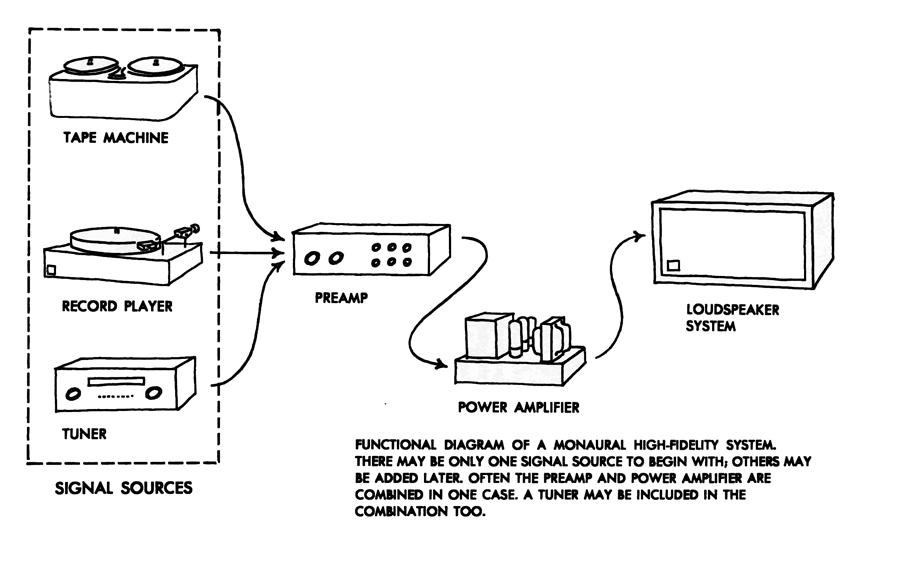Phonosystems: Towards Sound Portability
The collection of Industrial design that hosts the Archivo, Diseño y Arquitectura (Archive, Design and Architecture) was built under certain criteria that have helped it to shape up and sharpen with the years. Today, you can say that it has reached a first moment of maturity and, although it is still young, it already has an identity thanks to its different investigation lines. The genealogy has worked as a guide in our conception of Design’s History. Specifically, it helped to delimit one of our categories: Design for the Industry. This method, which even though it hasn’t been applied with complete rigor, has served as a guide to weave some sense inside this particular category, from which the pieces of this exhibition are completely derived. The concept, taken from Science, when applied to humanities shows to be much more flexible. So, our first historical narration is constructed not in a literal or temporal way. Genealogy from the point of view of Humanities, points at beginnings and discontinuities. According to Marshall McLuhan, in technology there are no beginnings, only moments where effects and causes of other technological advances converge; more like a constellation, where a technological advance is an effect of others which come before it and at the same time it is a continuation of the ones that will come.
“Genealogy means, therefore, origin and birth, but also difference or distance from the origin.” Gilles Deleuze
Phonosystems is made out of two parallel lines that are disrupted at key moments: the development of the radio and the history of the audio player and its formats. Both narrations start with the experiments of men such as Thomas Alva Edison or Edwin H. Armstrong in the case of the radio. The first one understood immediately the magnitude of his discovery, the moment he was able to print for the first time the sound waves in an aluminium cylinder on 1877. This invention inaugurated a technological gap that allowed civilization the possibility of manipulating its natural surroundings, in this case the acoustic surroundings, and frame it, fragment it and keep it through audio recordings.

